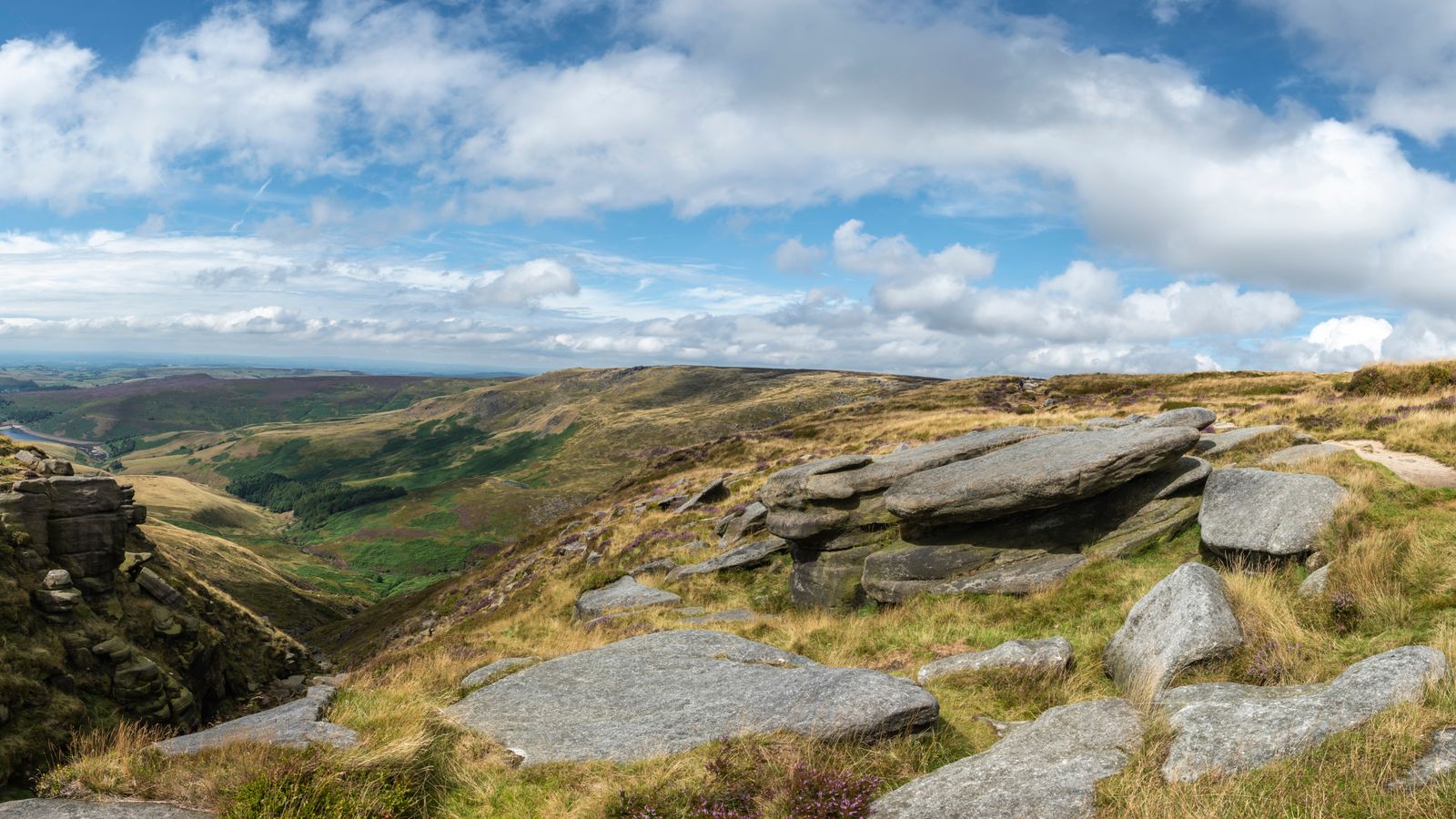A nature reserve in the Peak District, the site of an historic mass trespass that paved the way for countryside access rights, has been extended by more than 500 acres.
Kinder Scout, a National Nature Reserve (NNR) at the highest point in the Peak District, is now 26% larger after Natural England added an extra 226 hectares (558 acres) to its boundary.
The National Trust, which manages the site, said the extension recognises the “scientific research this area provides to help tackle the climate and nature emergencies”, which includes testing how peatland can soak up climate heating carbon dioxide, and how nature can buffer flooding.
Natural England’s chief operating officer, Oliver Harmar, said NNRs were established to protect important habitats, species and geology, “to provide ‘outdoor laboratories’ for environmental science and opportunities for people to enjoy nature”.
The site, now the equivalent size of 1,000 international rugby pitches, covers the highest point in the Peak District, 636m (2,087ft).
In 1932 a group of young workers staged a mass trespass in protest of the fact much of the moorland was out of bounds for ordinary walkers.
Many were arrested and some sentenced to prison, but the following public uproar triggered the creation of open access to moorland and of National Parks.
Pakistan floods: ‘The climate catastrophe of the decade’
Pakistan monsoon floods: Brave and resilient displaced people feel angry and abandoned
Tough choices for Germany as coal power stations return to keep people warm this winter
The protest “[paved] the way for millions of visitors to be able to escape city living and pollution to enjoy some of our most inspiring landscapes and connect with nature”, said Craig Best, general manager for the Peak District at the National Trust.
When the trust started caring for Kinder Scout in 1982, the mountain was a “barren moonscape of bare peat, degraded by human activity over the centuries due to pollution, historical land management practices, high visitor numbers and climate change”, said Mr Best.
Today the nature reserve is being “transformed into a plateau of healthy peat bogs rich in vegetation”, providing habitats for mountain hares and upland birds, he added.
Covering the bare peat with rich moorland vegetation and adding means to keep the moors wetter has reduced the erosion of peat by 98% within 18 months, according to monitoring data.
Researchers compared restored, healthy peatland with an unrestored, degraded “control” plot.
The restoration has increased the amount of carbon dioxide stored in the peat and improved water quality as it filters through the vegetation before reaching streams and reservoirs, the National Trust said.
Professor Tim Allott, from Manchester University, said without the control area they “would not have been able to properly assess the impact of the restoration work in slowing the flow of water on hillsides and reducing flood risk downstream”.
It also provides a “museum of the past damage on Kinder Scout”, he said.
“By simply standing within this small remaining ‘island’ of bare peatland, you get a dramatic sense of the scale of transformation of this iconic landscape by looking across the newly restored, vibrant, and diverse habitat which surrounds it.”
Watch the Daily Climate Show at 3.30pm Monday to Friday, and The Climate Show with Tom Heap on Saturday and Sunday at 3.30pm and 7.30pm.
All on Sky News, on the Sky News website and app, on YouTube and Twitter.
The show investigates how global warming is changing our landscape and highlights solutions to the crisis.










